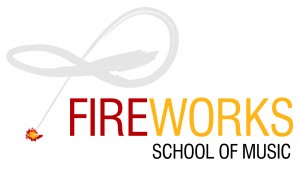Guitar Lessons for Young Beginners
Do you have a primary school aged child expressing an interest in having guitar lessons? Are you at a loss to know where to start in finding them a guitar teacher? Here are a few points to keep in mind that will help to guide you through, and keep your child motivated and achieving for many years to come.
Choosing a Guitar
There are three basic types of guitar available to you – the six-string acoustic guitar, the twelve-string acoustic guitar, and the electric guitar. The six-string guitar can be used in a variety of styles including classical guitar, flamenco guitar, pop guitar and basic chord strumming in a rhythm and blues guitar style. The twelve-string guitar is mostly used for rhythm and blues chord playing, and the electric guitar is used for rock and solo playing. Your child may have strong opinions on what style of music they wish to play, or maybe of what type of guitar they want you to buy them. Some students this age have not yet thought beyond wanting to play “guitar” and that is fine, too.
Twelve-string guitars are very hard for young fingers to play, and do not make a good guitar for a first year of learning. Your guitar teacher will agree that it is best to wait until little fingers gain some strength before moving to a twelve-string guitar.
Electric guitars are easy to play with regards to finger strength, and if your child is showing a particular inclination to play electric guitar as opposed to any other style, this is probably the best choice. One thing to keep in mind is the size of the instrument – electric guitars don’t usually come in small sizes. If your child can easily get their hands around a full size guitar, all is well. If not, and it is too large for them, it can cause problems ranging from it being too difficult to play leading to lack of interest, through to muscular problems in students practising for too long on an oversized guitar. Some brands do offer smaller instruments – Ashton Music, Australia has a ¾ sized Joey guitar available from Music Junction in Brisbane. Older students may also decide to swap from electric guitar to bass guitar at a later stage.
For general guitar lessons, a six-string acoustic guitar is a great way to start – they can be found as small as ¼ size for very young players. They also open up doors to the greatest range of styles for those students who have not yet decided on an area of specialisation.
First Guitar Lessons for Young Beginners
Your child’s first guitar lessons should be about opening doors to musical styles, not closing them. Therefore, it is important to make sure you choose a teacher who is fluent in a number of guitar styles. A good grounding in the first year of guitar lessons should teach students to play and read a number of styles.
- Music Notation. The ability to read the treble clef is essential for learning classical styles, and as a foundation for many other musical interests your child may develop.
- Chords are equally as important and give students an opportunity to play with friends and family – the social importance of music is often underestimated!
- Tablature (TAB) is the language of modern guitar, and students should be able to read TAB as it will mean they are able to be more self-directed in their later learning.
- Apoyanda style guitar playing, or finger plucking as opposed to chords will help develop co-ordination and will continue into classical and flamenco styles, and if they later change to electric guitar into lead guitar style.
A half-hour guitar lesson should be enough time to get through a little of everything, and a good guitar teacher will make sure that students are learning important skills through music that they love!
Don’t forget that musical development, especially with regards to reading music notation, is significantly linked to a child’s development in other areas, and often the younger a child is, the slower their progress, so be patient!
Practice – to push or not to push?
As you are probably aware, practice is an indispensable part of any student’s routine. Some students will naturally practice in a mature fashion from the very outset, all under their own steam – lucky parents and lucky teachers! For the other 99.9%, practice does not come naturally, and for some families it can become quite a battle. For your child’s sake, please remind them to practice, as many of them have a problem remembering what is expected of them. Set goals in consultation with your guitar teacher, and try to stick to them. One of the reasons it is so important for students to practice is that their sense of worth as relates to playing the guitar is strongly linked to their sense of achievement. So set goals, and start small! Your guitar teacher will help with this.
I hope that this article has been of some use to you. If you have any questions or comments, please contact me.
Ellen Harle
